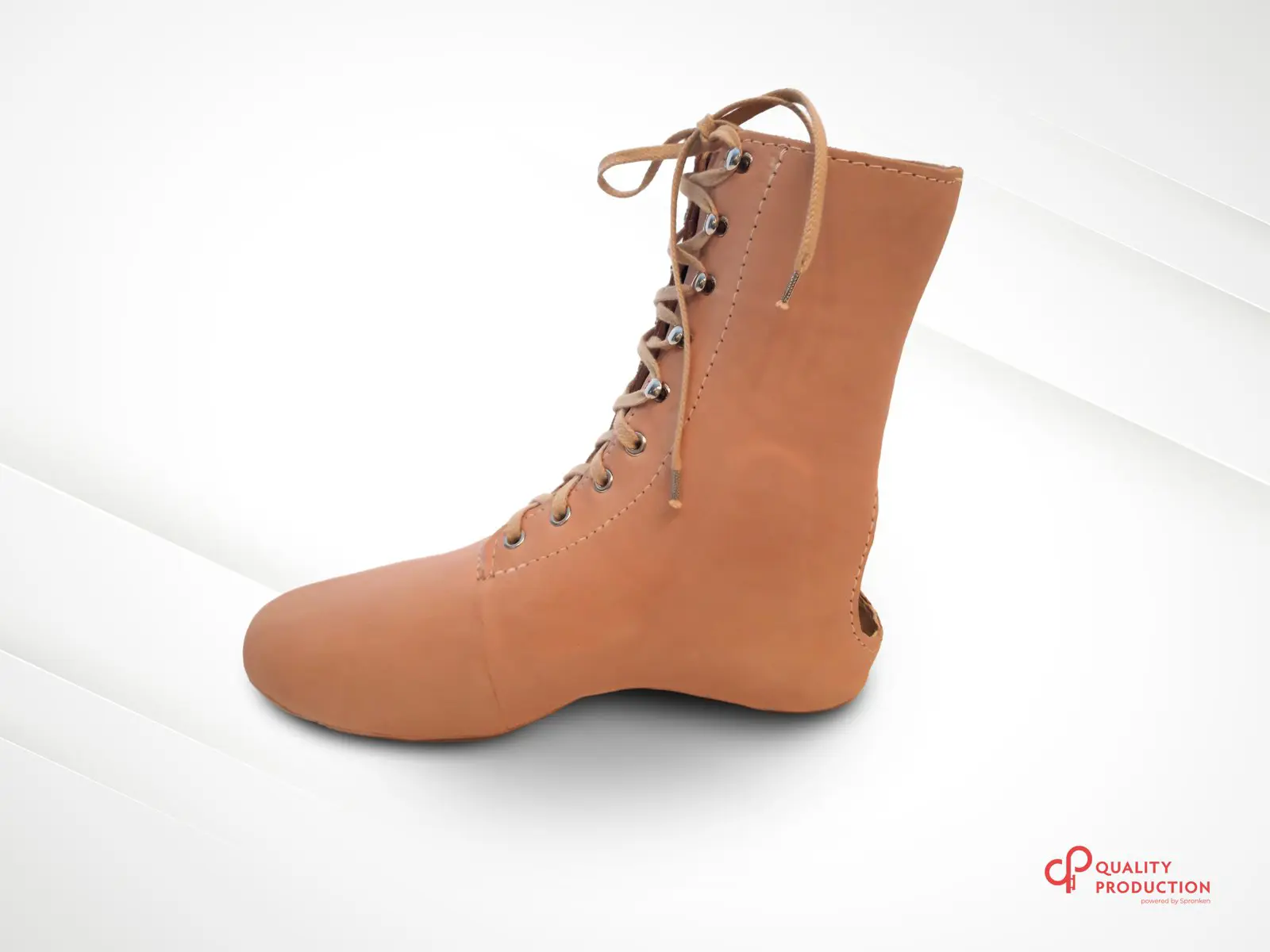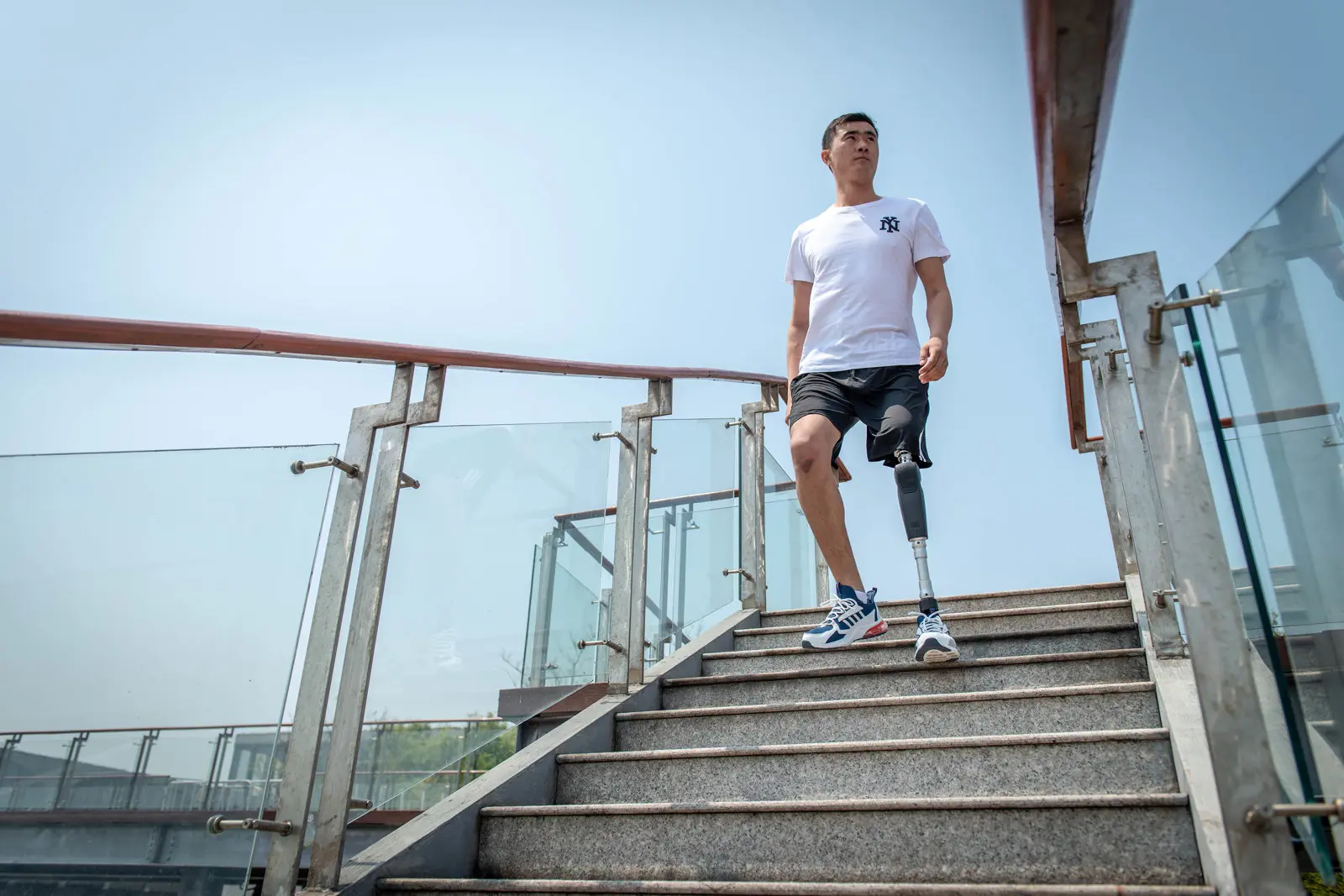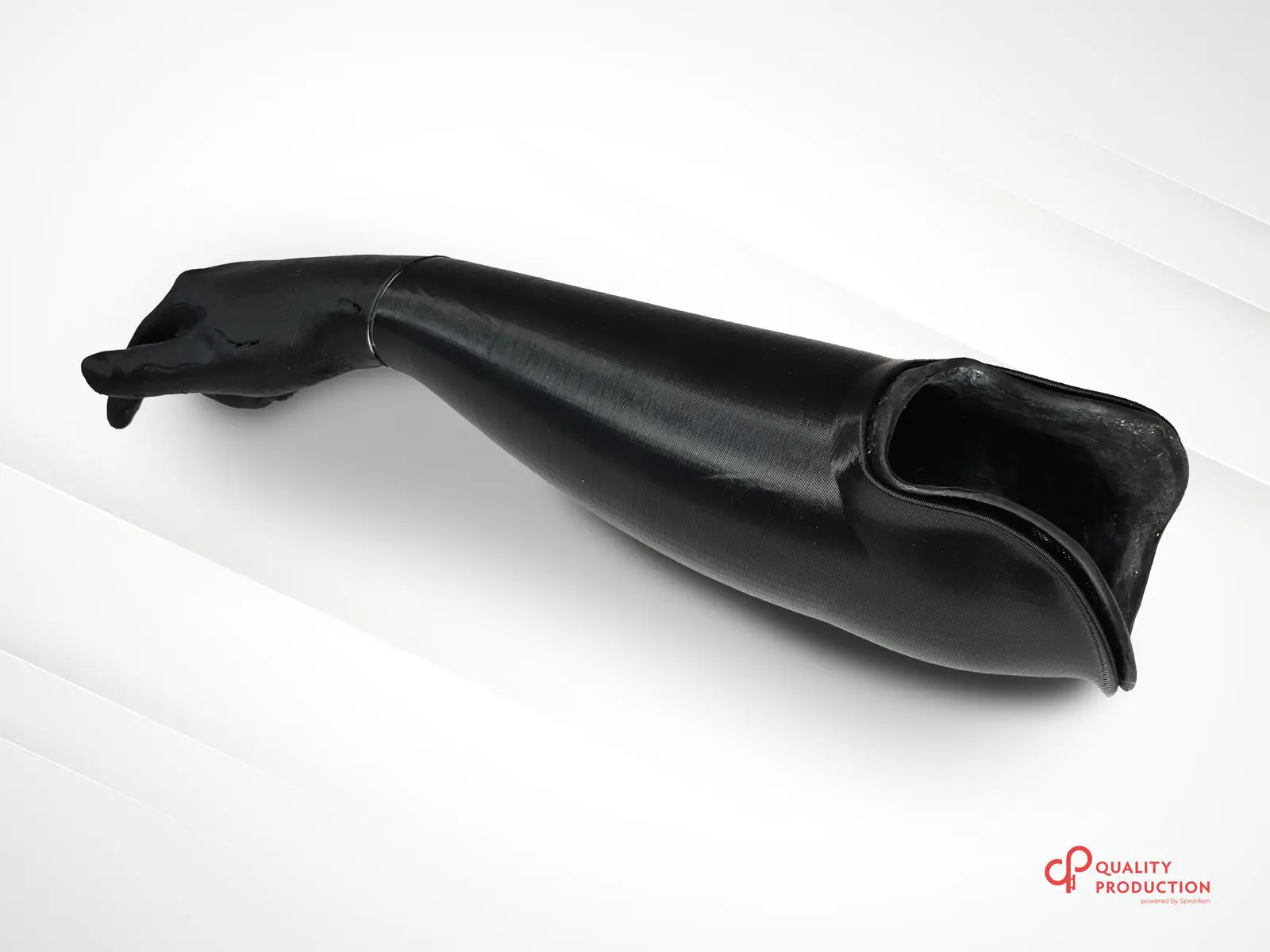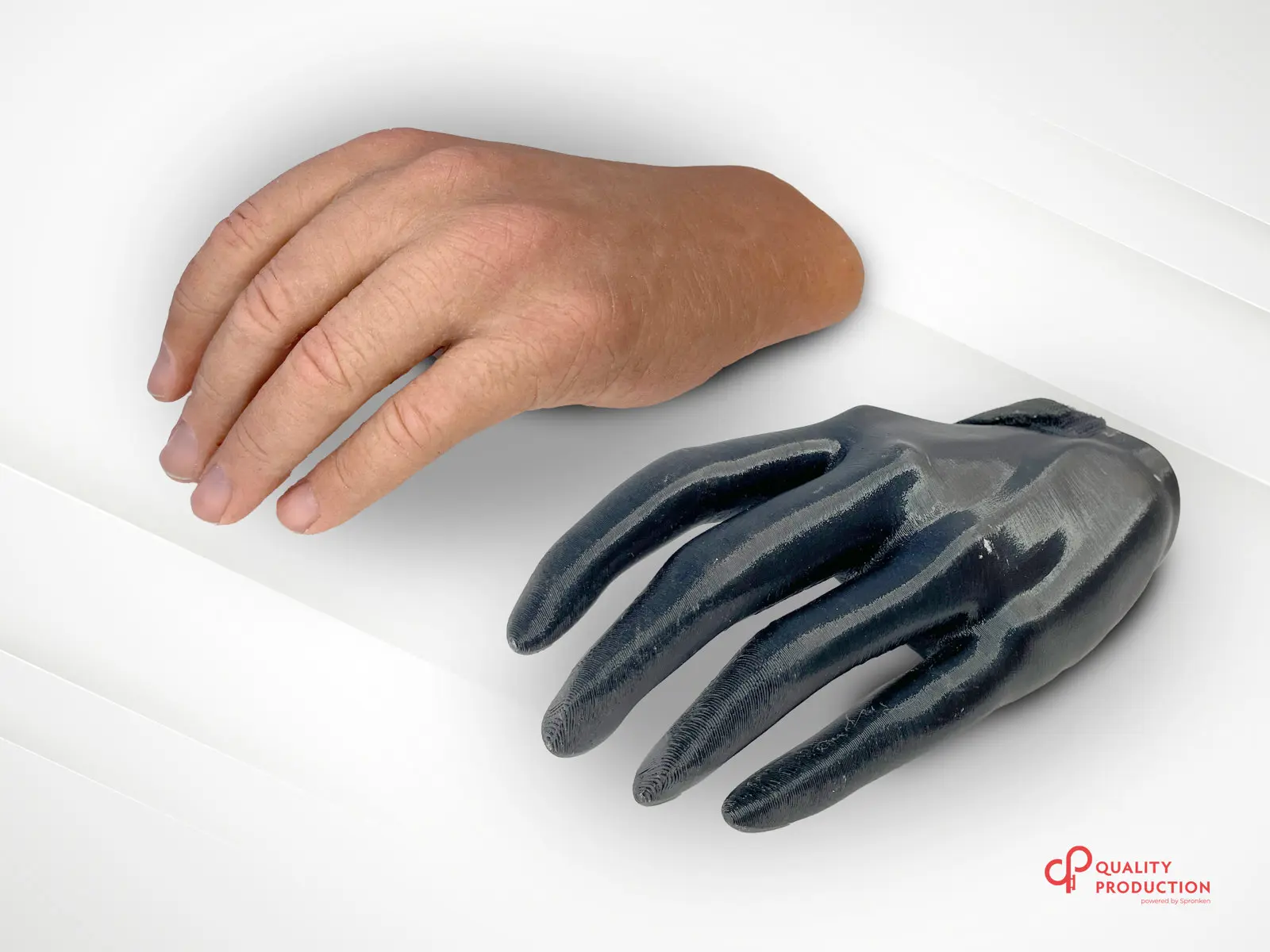Passion for creating limb and arm prostheses
Depending on the type of prosthesis, there are various methods available to ensure the most precise measurement. In addition to traditional plaster casting, providers and orthopedic instrument makers are increasingly using digital measurements, where the limb is scanned with a 3D scanner.
The impression of the limb (the negative) is then used to create a replica (the positive) of the residual limb. This replica is used to fabricate the prosthesis socket.
The most commonly requested type of prosthesis socket is a laminated socket. During this production process, a combination of fabric, glass and/or carbon fiber, and acrylic resin is used. The end result is a composite material. The mechanical properties of this socket ensure safe use of the prosthesis, particularly for lower limb prostheses. Trial sockets or sockets for fit evaluation are usually made of plastic.
For upper limb prostheses, we are increasingly using 3D-printed models. This production technique allows us to optimize the fit by working with prototypes. Once the prototype's shape is optimal, it can be used to create a final model. We often create cosmetic prostheses for the hand or fingers using silicone.
Trendy sockets and covers
Prosthetic sockets and covers have become increasingly trendy and fashionable. They come in various sizes and shapes, perfectly fitting under pants, leggings, or tall boots. Your patient can choose from a wide range of colors, patterns, and designs to express their individuality.
Using 3D printing, we create custom-made covers that are more comfortable, lighter, and better fitting than traditional methods. 3D printing technology also allows for faster production times and lower costs in creating prosthetic covers.
Partial foot prosthesis
Types: Lisfranc, Chopart, Pyrogoff, Syme
- In the initial fitting, a test socket can be made using thermolyn.
- The definitive socket can be cast in resin, manufactured with nylglass and carbon, or silicone.

Transtibial (TT) Below-Knee Prosthesis
The process of creating custom-made leg prostheses requires attention to detail and continuous communication between the Certified Prosthetist Orthotist (CPO) and the patient.
Come in for a consultation and discover how Quality Production's prosthetic makers can assist you in creating leg prostheses for your clients.
- In the initial fitting, a test socket can be made using thermolyn.
- The definitive socket can be cast in resin or manufactured with nylglass and carbon.
- With or without a soft socket.
- Systems are integrated into the socket.
- Components such as pins (smooth or serrated), ropes, vacuum, BOA are ordered based on the customer's request and the prosthetic maker's recommendation.
- Anchors, adapters, feet, systems, etc.

Transfemoral (TF) Above-Knee Prosthesis
- In the initial fitting, a test socket can be made using thermolyn.
- The definitive socket can be cast in resin or manufactured with nylglass and carbon.
- With or without a liner.
- Systems are integrated into the socket.
- Components such as pins (smooth or serrated), ropes, vacuum, BOA - Parts based on the customer's request (CPO)
- Anchors, adapters, knees, feet, systems, etc., are included as needed. - Finishing is done according to circumferential measurements (measured by the client prosthetist).
Hip Disarticulation Prosthesis
In a hip disarticulation, the entire leg is amputated through a disarticulation at the hip joint. The surgeon removes the femoral head from the acetabulum, usually preserving the pelvis and ischium. In a hemipelvectomy, the leg and parts of the pelvis are amputated. Hip disarticulation is necessary in cases such as tumors, severe trauma, and infections.
Hip disarticulation poses a major challenge for prosthetic treatment. Every other lower limb prosthesis is powered by the user's residual limb, either below the knee or above the knee. However, in the case of hip disarticulation, there is no corresponding residual limb. Control is solely taken over by the pelvis. This unique situation makes the fabrication of a hip disarticulation prosthesis (HDP) an absolute specialization in the field of lower limb prosthetics, requiring a high level of expertise.
You can choose from three concepts:
- Two-piece pelvic belt with dorsal locking technology and individual silicone hip liner.
- Semi-flexible pelvic belt with individual silicone hip liner.
- Classic pelvic harness.
Arm Prosthesis: Wrist - Forearm - Upper Arm
- In the initial fitting, a test socket can be made in thermolyn.
- The final socket can be cast in resin and manufactured with nylglass and carbon.
- With or without inner liner.
- Placement of myoelectric components.
- Systems are integrated into the socket.
- Smooth or serrated pin, Vacuum, Electrodes. - Components are ordered according to the customer prosthetist.
- Hand, myoelectric components, glove, etc. - Hard finishing based on circumference measurements (measured by the customer prosthetist).
- The final layer of the socket can be requested in different colors and/or patterns.
- Components and materials are purchased from Open Bionics, OttoBock, Össur, or another manufacturer chosen by the customer.

Hand & Finger Prosthesis
At Quality Production, we are driven by a mission to help individuals with finger and partial hand amputations make the most out of their lives. We strive to create prostheses that are not only functional but also aesthetically pleasing. We recognize the importance of providing these individuals with prostheses that can assist them in regaining some of the functions they have lost due to amputation.
We will discuss the case with you and work together to find the best solution.


